
|
NOTE: You are viewing the OLD VeloceToday website. We are in the process of moving some of the old articles from the OLD site to the NEW site.
|

|

|

|


Home
Cars
Racing
News
People
Lifestyle
Events

|

|

|
Cars
|

|

|
February 7th 2007
Lancia Appia Series I Restoration
By Staff
One of our readers in Italy sent us these photos on a
restoration that he completed on an Appia Series I that was found in deplorable shape
and thus saved from a certain death in a scrap yard. The original license
plates and documents were still with the car. The engine bay still needs the
radiator and electrics. The interior is very well done in
period fabric; the floormats were originally rubber but carpet has very
tastefully been used instead in the restoration as rubber matts are very
difficult to obtain. The dashboard does not have the optional radio that
was fitted by Lancia. The owner may still be looking for one. The bumpers
are still waiting for the period rubber protection strip. Here are a selectiohn
of photos taken as the restoration proceeded.
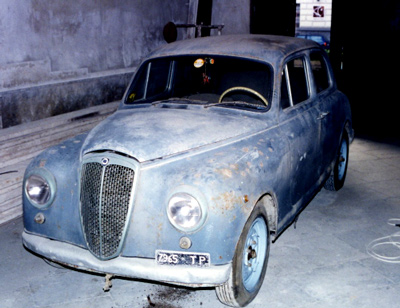
Series I Appias are very rare today. Virtually none were imported to the U.S., but examples such as this one can be found in Italy.
|
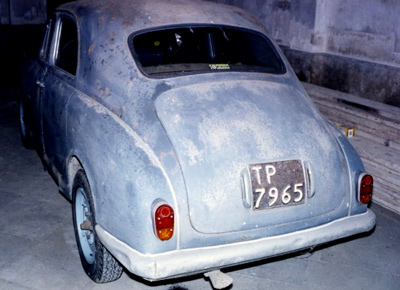
The condition does not appear to be very rough, but rust can usually be found in stress areas such as the rear spring shackle holders, and the front passenger compartment, floorplan and in the trunk.
|
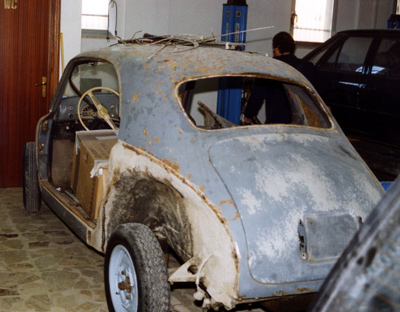
Fortunately everything comes off and can be stored easily, leaving just the chassis. This makes the Appia a relatively easy restoration.
|
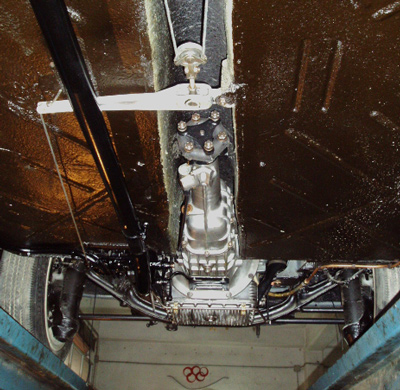
Looking toward the engine and transmission during restoration. The lever and cables are all part of the parking brake system.
|
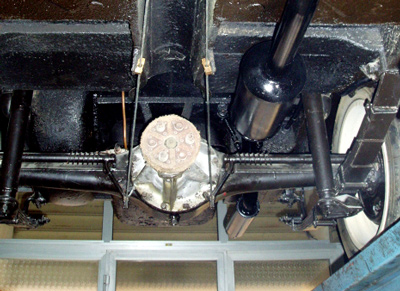
Rear axle after restoration. A rather heavy rear axle, supported by leaf springs. The 1st series ratio was 9/41, the later models had a 11/46 ratio.
|
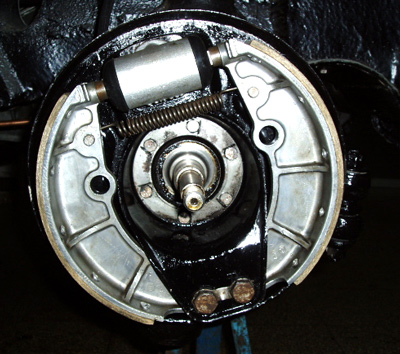
Front brake assembly. Aluminum shoes front and rear, single leading shoe.
|
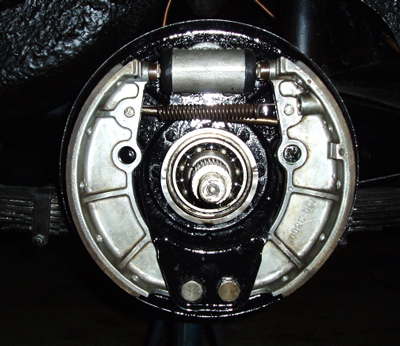
Rear brake assembly. This incoporated the emergency brake as well.
|
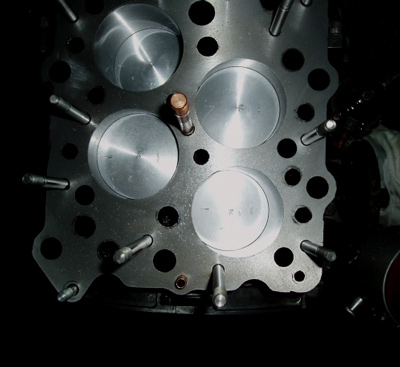
Top of block showing the unique 10 degree angle and staggered piston bores.
|
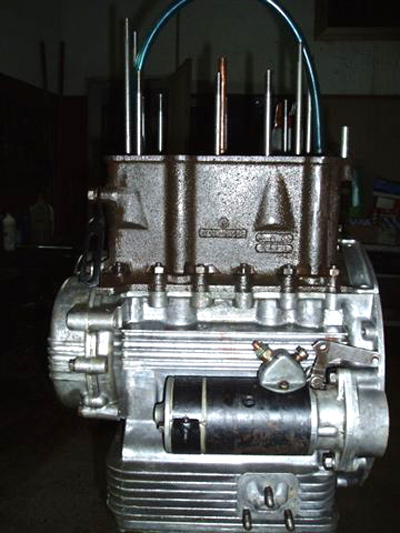
Side of the engine, with starter in place. Lever on starter operates the solenoid.
|
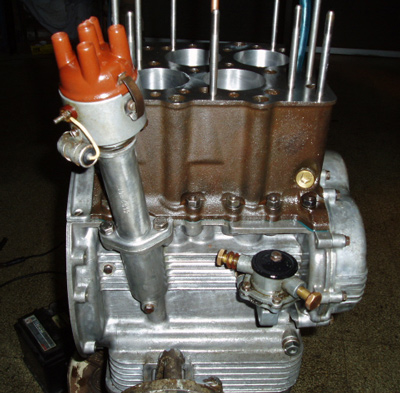
The other side of the engine illustrates the placement of the distributor drive and fuel pump.
|
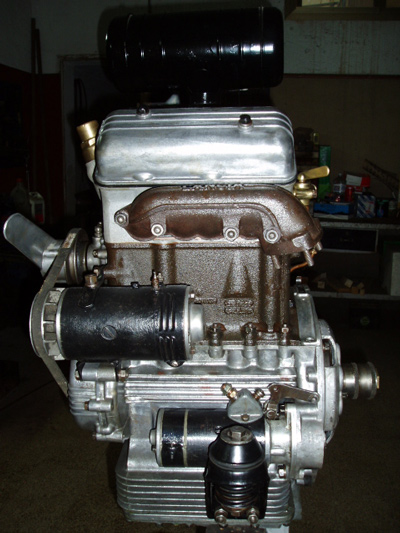
With the head on the iron block. The sump, head and ancillary castings are all aluminum.
|
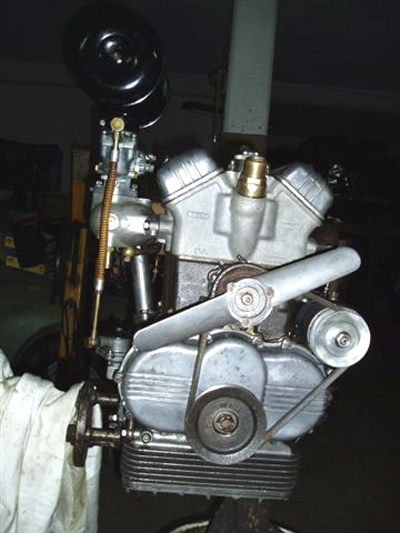
Front of the engine, aluminum fan, timing chain covers, and sump are all visible here.
|
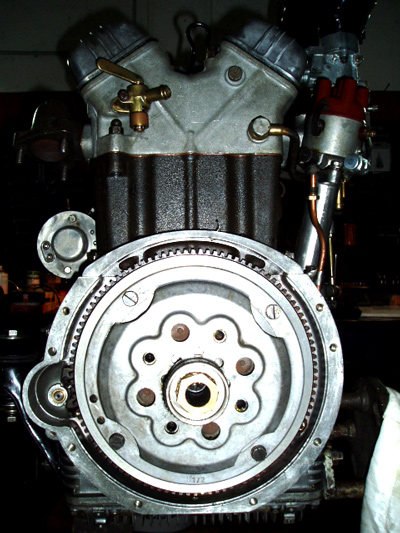
Flywheel assembly, ready to mount to four speed transmission.
|
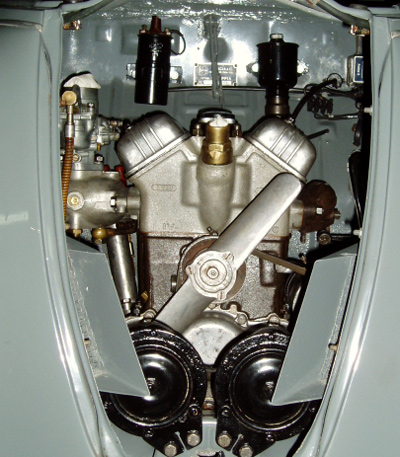
The engine in place as seen from the front. The twin horns loom large.
|
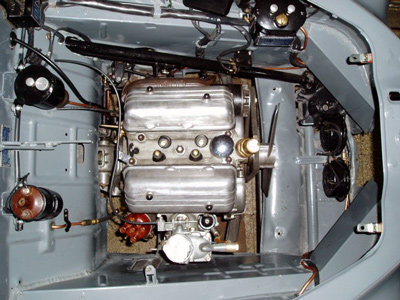
Virtually square, the tiny 1100cc engine fits easily into the bay. Stock color for the valve covers was a black wrinkle finish.
|
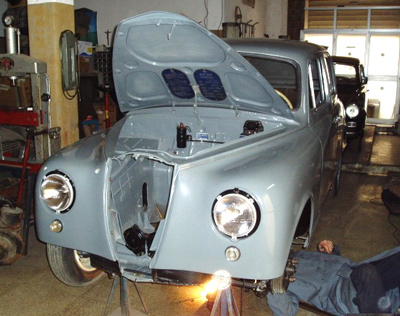
Inside and out, this restoration is very thorough. However, application as a practical classis is limited by the poor performance.
|
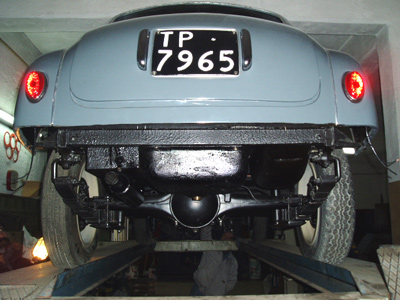
Underside and rear of the Appia.
|
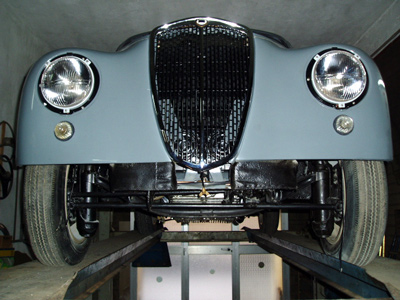
Frontal image shows the famous Lancia sliding pillar suspension.
|
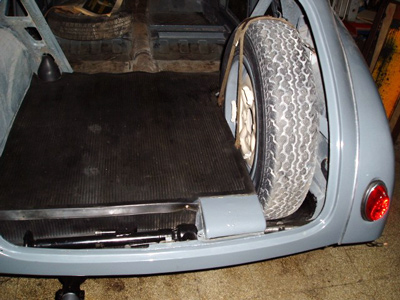
We would guess that under this completed trunk rubber was a lot of rust which had to be removed. We said it was relatively easy, not fun.
|
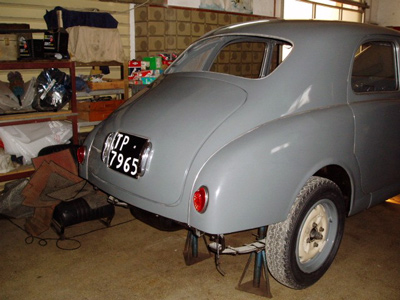
Springs and rear axle ready to be fastened to the chassis. Battery is mounted in the rear.
|
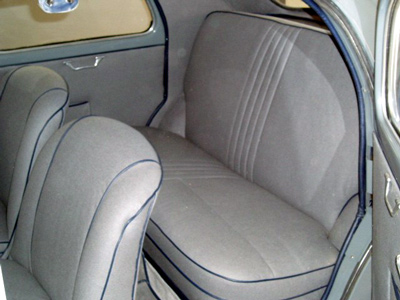
The rear seats look comfortable and provide enough space for a real adult. All Appias were built with high quality materials, but the cost was high and hindered sales.
|
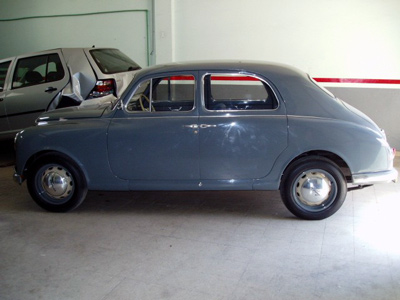
Appias looked very much like a small Aurelia, and yet had a unique charm of their own. They could have used about 40 more horsepower though.
|
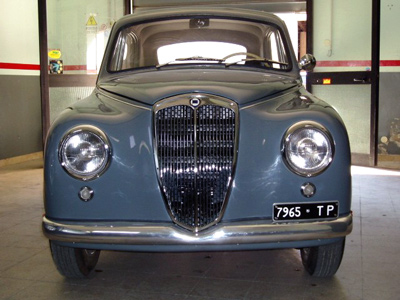
This is a classic, well proportioned automobile. The Series III denied new customers this classic front end.
|
|

|
|

|
|



